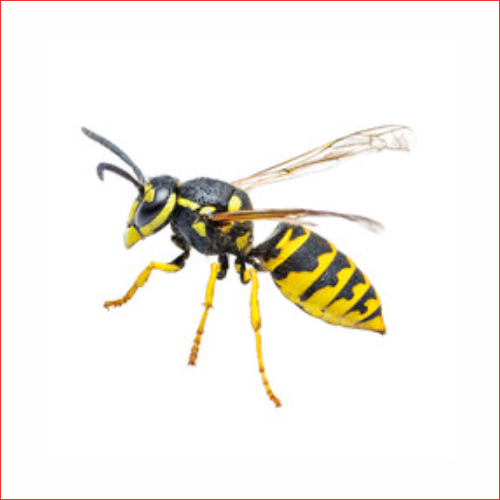Our Pest Treatments Include:
- We will conduct a full property inspection before going ahead with the treatment to determine the level of infestation, entry points and the most appropriate removal method for the current situation.
- We use the latest pest control products and equipment to ensure full eradication of all insects, rodents and birds such as:
UV vacuum cleaners
Eco-friendly pesticides
Pigeon spikes for effective bird control - We offer pest proofing services to block all entry points and prevent future infestations.
Wasps and Hornets
WUnlike their honey producing cousins, wasps and hornets can be a big problem around your home. A sting can be extremely painful especially when you have an allergic reaction. Wasps are dangerous insects and a wasp nest or hornet nest can remain active for months. Wasp nest removal can be extremely dangerous, multiple stings can lead to a hospital visit and in rare cases where wasps have stung inside the mouth or other sensitive areas even death. Our pest control technician provides guaranteed wasp control solutions.
Wasps – Both bees and wasps can cause problems for residential and commercial properties during the warmer months.
Wasps are carnivorous, eating smaller insects and spiders. Most species build paper nests, with the larger hornets building nests that may be as big as a basketball.
If you are experiencing high numbers of wasps in your home or garden, it is very likely that there is a wasp nest nearby. Being stung by a wasp, hornet or bee is a painful experience and can be life-threatening for people who are allergic to stings.
Wasp Nests
Take care when dealing with wasps and hornets (a larger member of the wasp family) – they have a potent sting and can attack in large numbers if disturbed.
A single nest may contain thousands of wasps which can swarm and attack if disturbed. If the location of a wasp nest is likely to put people at risk, then the nest should be destroyed.
The nest is made from chewed wood that gives them their distinctive papery walls. A queen wasp will start to build a nest in the spring but then as workers hatch they take over nest building.
By early summer, a typical wasp nest will be 30 cm across although they can be much larger. Common sites for a wasp nest include under the roof eaves, in attics or in sheds and out-buildings.
This risk from wasps is particularly high towards the end of summer – it is preferable to destroy a wasp nest earlier in the year before wasps become aggressive.
Wasp Nest Removal
To locate the nest, watch the flight path of returning wasps. If the nest is near the home, keep nearby windows closed. If you suspect the nest is in the attic, take great care in opening and entering the attic space.
Do not apply when on a ladder or from a raised height.
Wasp swarms are dangerous – if in doubt, seek professional help.
It has been reported that as many as 90-100 people die each year from allergic reactions to stings from insects like bees, wasps, and hornets.
If you have a bee or wasp problem, call for a Free Quote as soon as possible!

